
Computer courses for children to master basic knowledge and follow the school curriculum, helping children access technology from a young age to stimulate future career orientation and achieve good performance at school.
# Shorthand and computer proficiency # Software proficiency # Closely follow school curriculum # Shape IT career mindset

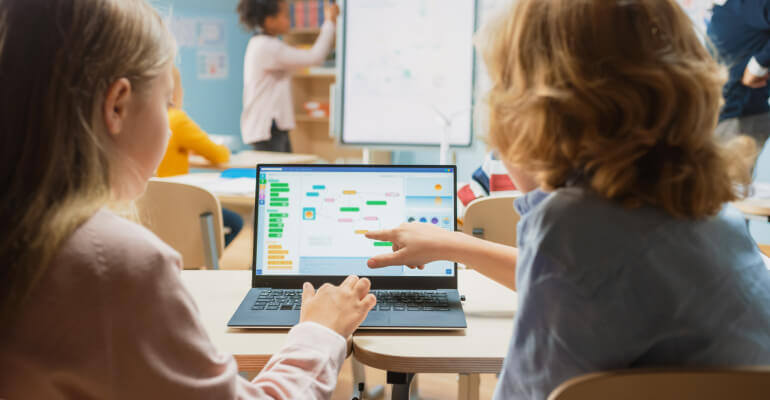
Computer Science for Children helps children approach technology early, practice logical thinking and computer skills. The program is scientifically designed, from basic to advanced.
Children learn office computer skills, Internet safety, and become familiar with simple game programming. This is an important foundation for future technology development.
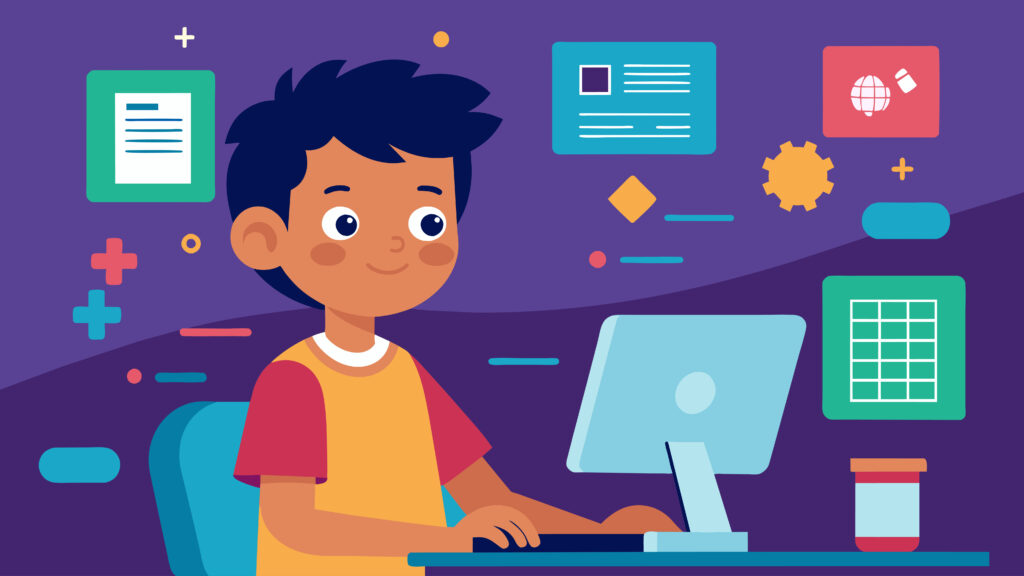
Information technology is not only a necessary skill in learning but also helps children form creative thinking, solve problems quickly and proactively.
Learning computer science early will help children be confident in the digital age, easily access new technology and have a distinct advantage when entering higher education.
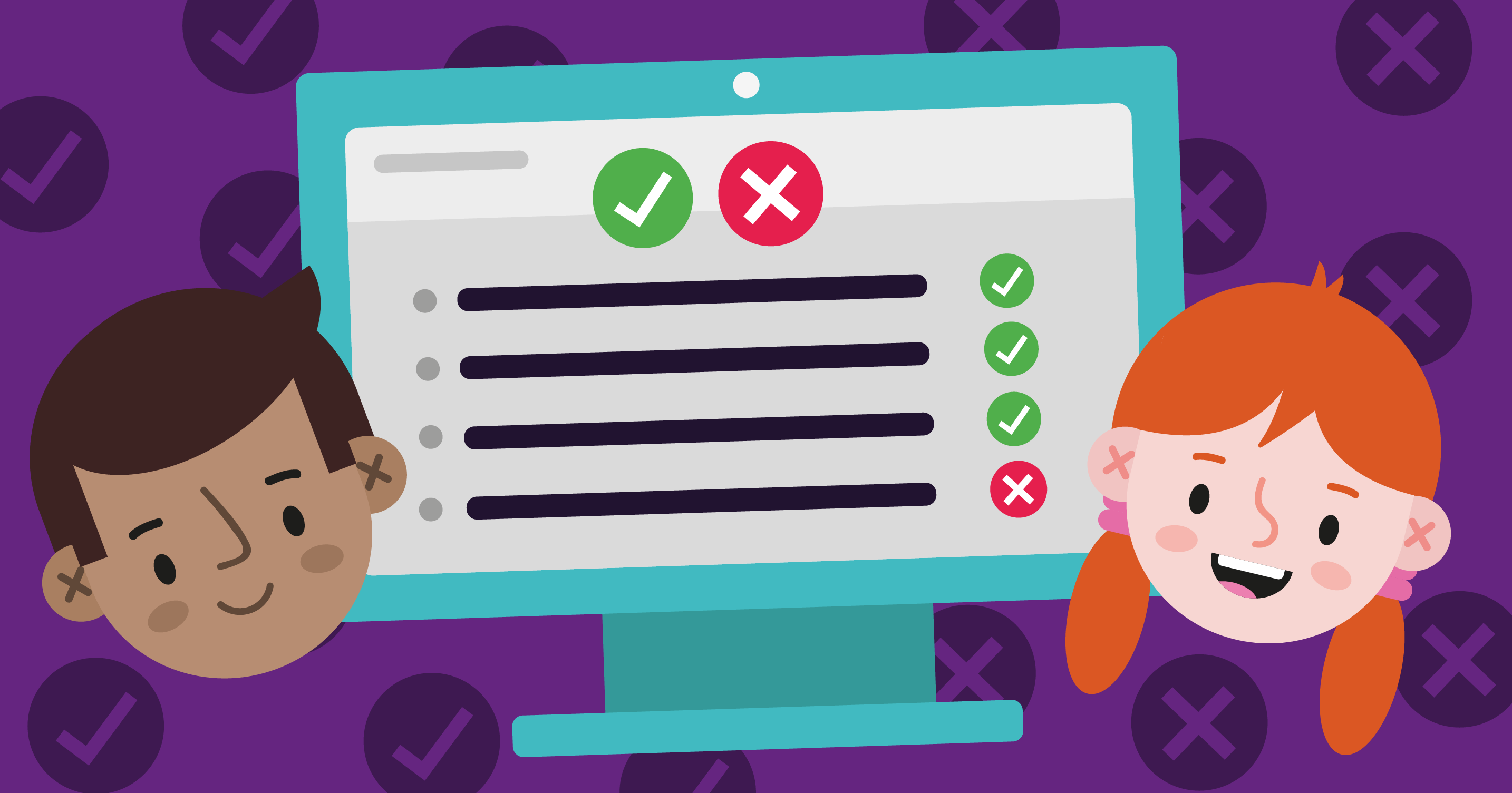
Programming helps children think logically, practice patience and creativity. Children can create their own games and small applications while still in school.
When exposed to programming, children will understand how technology works, form systematic thinking and develop independent problem-solving skills.
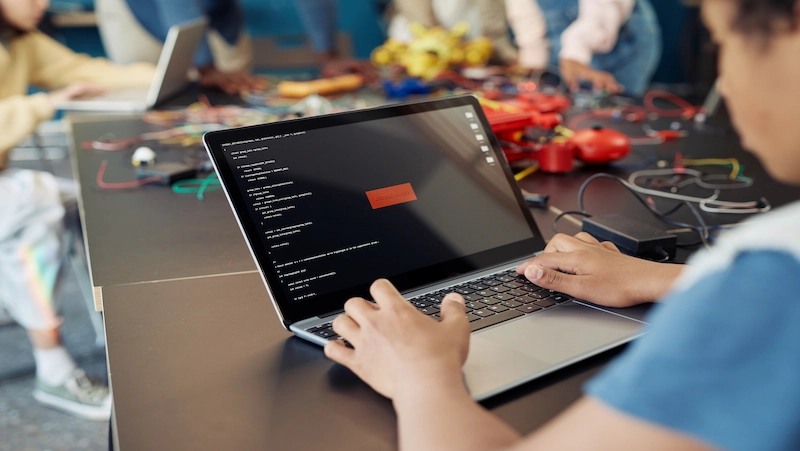
The courses are suitable for children aged 7–15 who have no programming knowledge but love computers, games or want to learn about technology.
The curriculum is designed according to age, easy to understand, with many interactive games, ensuring children are interested in learning and absorbing knowledge naturally.
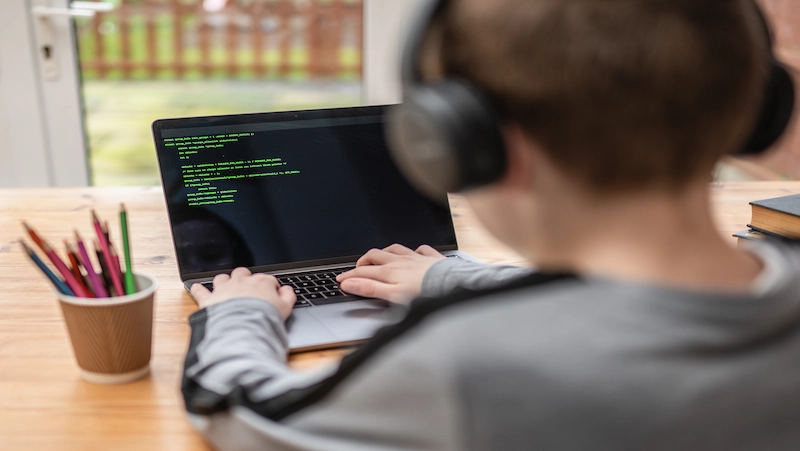
Children learn to use computers, office software, typing skills, drawing with Paint and Internet safety. This is the first step to getting familiar with technology.
Children learn and practice at the same time, creating small products such as presentations and digital drawings, helping them understand that information technology is close and practical in life.
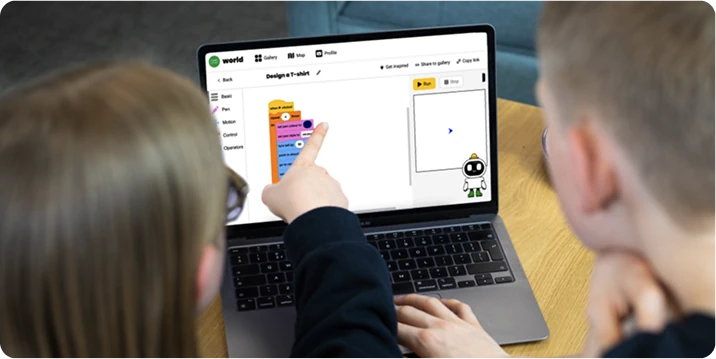
Scratch programming, Blockly and friendly software are included in the curriculum. Children create simple games, animations, and small applications.
The visual approach makes it easy for children to learn, without the pressure of complex math. Children can experiment creatively and see the results immediately on the screen.
Children will be introduced to Scratch, Blockly, Code.org and other free online apps. These are intuitive, colorful and easy to use tools.
Programming software for kids is free and runs on many devices. Children can learn more at home and develop skills continuously outside of school hours.
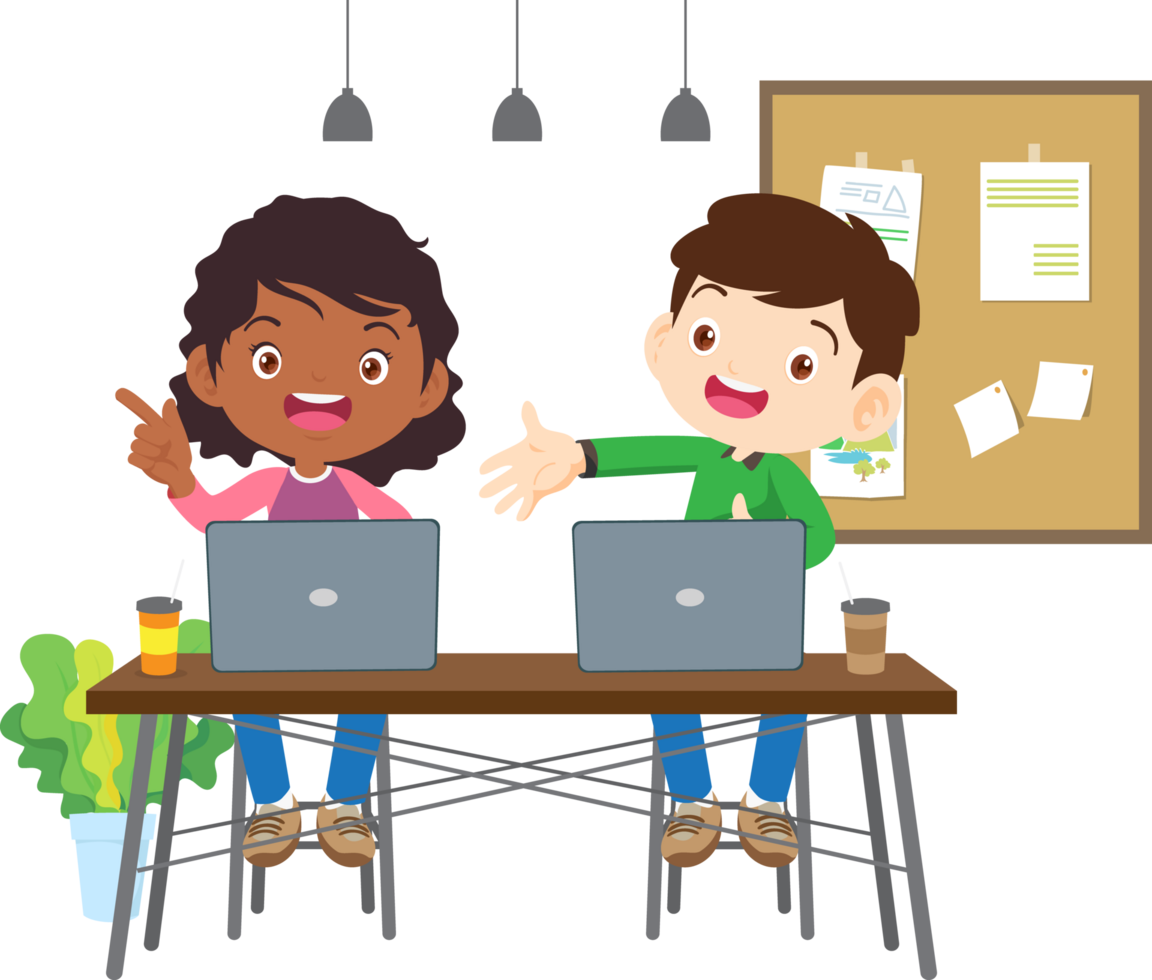
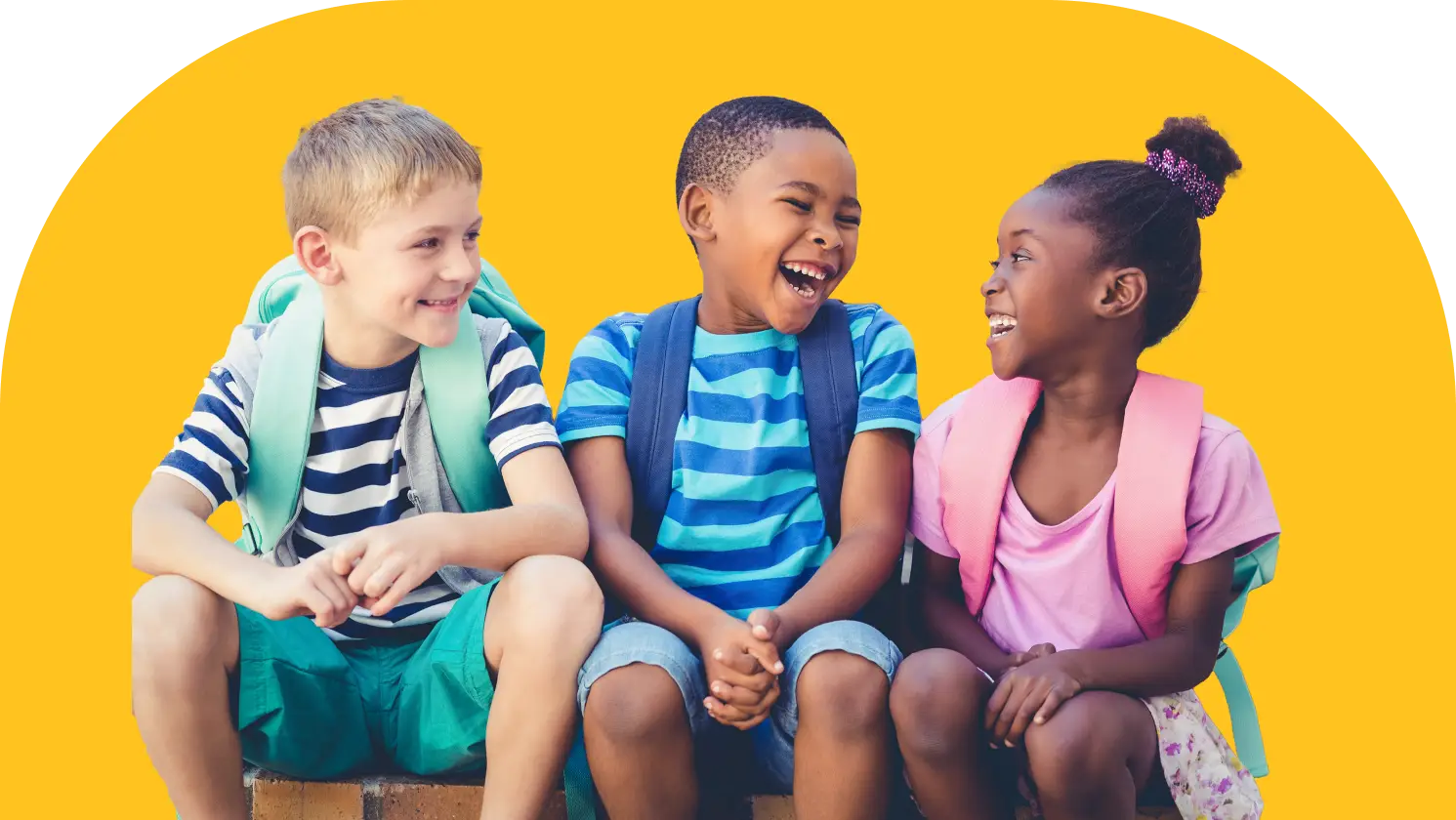
Learning through games, small projects and group exercises helps children not get bored. Each lesson has a finished product made by the children themselves.
Teachers act as guides, encouraging creativity. Children learn while playing, develop their thinking and form a love for technology.
Learning programming from a young age helps children become confident with technology, opening up opportunities to become software engineers, game designers or IT experts in the future.
In addition to professional skills, programming also trains patience, creativity and problem-solving spirit – important skills in every field.

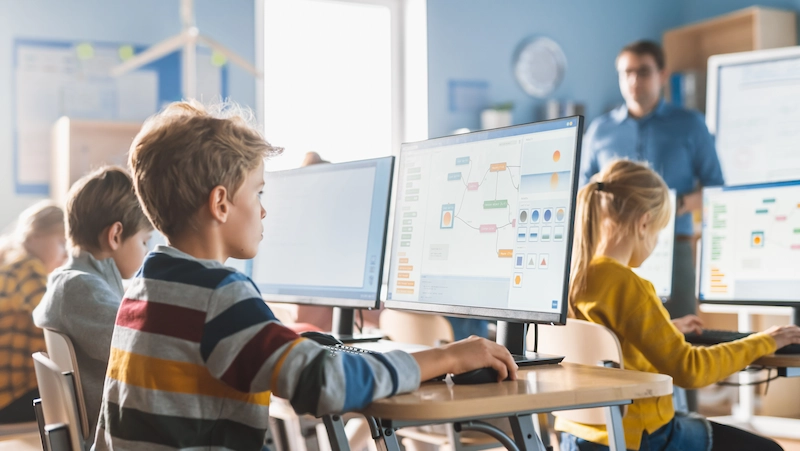
The center provides a modern learning environment, scientific curriculum, experienced lecturers, helping children develop comprehensively.
Studying at a reputable center helps parents feel secure, children have a good practice environment and clear orientation, preparing a solid foundation for the future.
In a world that is changing at a dizzying pace thanks to technology, equipping children with digital skills is no longer an option, but has become an inevitable requirement. This content will deeply analyze the core benefits that information technology and programming bring, helping parents realize that this is not just learning a professional skill, but a comprehensive investment in their children's thinking ability, creativity and adaptability in the 21st century.
Learning to program is essentially learning how to “talk” to a computer, and to do so, children must follow an extremely logical and structured thinking process. This process helps children practice algorithmic thinking – the ability to break down a large, complex problem into smaller, simpler, more manageable tasks. Similar to assembling an elaborate LEGO model, each line of code (piece) must be placed in the right place, in a precise sequence for the program (model) to function perfectly.
One of the most important parts of programming is debugging. When a program doesn't work as expected, children can't give up. Instead, they must learn to patiently go through each step, analyzing the causes and effects to find the error. This process of "bug hunting" is the most valuable practice for critical thinking and problem-solving skills. Children will constantly ask themselves "Why doesn't it work?" and "What do I need to change?". This is a core competency that helps children confidently face and handle all challenges in their studies and life later on.
Many people mistakenly think that programming is a dry field, full of numbers and logical characters. In fact, it is completely the opposite, programming is one of the most powerful creative tools of the digital age. With platforms designed specifically for children like Scratch (developed by the Massachusetts Institute of Technology - MIT), children can turn any idea in their imagination into reality.
By simply dragging and dropping colorful blocks, a child can create a game, design a short animated film, or write a unique interactive story. The only limit is the child’s creativity. This process not only helps children express themselves, but also brings a great sense of accomplishment, building confidence when they see their own creations being accepted and experienced by others.
In the 21st century, digital skills are not just for software engineers or technology experts. From healthcare, finance, agriculture, art to education, every field is undergoing a powerful digital transformation. Doctors need to analyze medical records, designers use complex graphics tools, marketers rely on algorithms to reach customers.
Understanding computer science and programming principles will become a kind of "second language", a fundamental skill similar to reading, writing or calculating. Teaching your child to program early is not necessarily to orient them to become a programmer, but to equip them with the ability to master technology, easily adapt and excel in any career they choose to pursue in the future.
Coding is closely linked and complementary to STEM subjects (Science, Technology, Engineering and Mathematics). It is not only a part of "Technology" but also a great tool to visualize and apply knowledge from other subjects.
When programming a character to move on the screen in a certain trajectory, children are applying abstract mathematical concepts such as coordinate systems, angles, and variables in a very vivid way. When building a model simulating the solar system, children will gain a deeper understanding of the principles of physics and astronomy. Programming turns dry formulas and theorems in books into interactive products, helping children grasp knowledge in a fundamental way and remember it longer.
In addition to technical skills, the programming learning process is also an ideal environment to practice essential soft skills. When participating in group projects, children learn how to communicate, present ideas, divide work and solve problems together. To complete a game or application, children must learn how to manage the project: from ideation, planning, implementation to testing and completion.
Most importantly, facing and overcoming the challenges of writing code, debugging, and finally completing a product gives children confidence and resilience. They learn that mistakes are part of the learning process and that success only comes through perseverance and continuous effort. Most children today are exposed to technology at a very early age, but mostly as passive consumers: watching videos, surfing social media, or playing games. This can lead to uncontrolled use of electronic devices. Learning to code creates a revolutionary change: it turns children from “consumers” of digital content to “creators.” Children begin to understand the mechanics behind the apps and games they love. This role shift helps children master technology rather than be controlled by it, a psychological and cognitive ability that is extremely important.
Determining the right time for your child to start learning programming is one of the biggest concerns of parents. Starting too early can cause pressure, but starting too late can miss the best stage of thinking development. Based on research on children's psychology and cognition, it is possible to divide the technology learning path into "golden" stages corresponding to each age, ensuring that learning is always an exciting journey of discovery.
At this age, the goal is not to teach children to write complex lines of code, but to instill the seeds of “computational thinking” through fun activities. Children will be introduced to the most basic concepts such as sequential commands (do A first, then B), loops (repeat an action), and simple conditionals (turn right if you encounter an obstacle).
These activities can be completely unplugged, such as giving directions to a friend who plays the role of a robot, arranging blocks according to a given rule. In addition, educational applications and toys such as ScratchJr, Kodable, Lightbot or Bee-Bot robot are designed to help children learn these concepts in the most intuitive and vivid way. This stage helps build a foundation of thinking naturally, without pressure.
This is considered the most ideal age for children to officially enter the world of programming. At this time, children have good reading comprehension skills, logical thinking has begun to clearly form and the ability to concentrate is also higher. The most suitable form of learning at this stage is visual drag-and-drop programming (block-based programming), with the typical tool being Scratch.
With Scratch, children don't have to worry about complex and error-prone syntax. Instead, they assemble colorful blocks to create programs. It is during this "play" that children unconsciously absorb core programming concepts such as variables, loops, conditional statements, events, etc. Project-based learning is the key to success at this age. Children are encouraged to create their own games and animations based on their interests, helping to maintain motivation and foster a passion for technology in a sustainable way.
Once children have mastered programming thinking and core concepts through drag-and-drop tools, they are ready to move on to text-based programming in real languages. This is an important step from free-form creativity to more structured and disciplined learning.
Python is a great starting choice thanks to its clean, easy-to-read syntax and its wide range of applications in hot areas such as artificial intelligence (AI) and data science. JavaScript is also a popular choice, an indispensable platform for developing websites and web applications. Projects at this stage will be more complex and require deeper thinking, such as building a personal website, writing a small utility software, or programming 2D games with complex logic.
Interestingly, at the age of 7-10, children often do not realize that they are "learning" in the traditional sense. They think that they are simply creating a game of tag or a fun cartoon. However, behind each project is the application of programming concepts. The "forever loop" block in Scratch is the essence of the while(true) loop in real programming languages. The "if...then..." block is the if...then conditional statement. This "hidden learning" phenomenon helps children absorb knowledge naturally, without pressure, building a solid foundation without feeling bored.
A well-structured learning path will equip children with a comprehensive set of skills, from the most basic operations to the ability to create complex technological products. Below is an overview of the core knowledge areas that a quality computer science and programming training program for children usually includes, helping parents better visualize their child's development path.
This is the first building block, ensuring that children can use their learning tools effectively and responsibly. The content of this lesson goes beyond just getting familiar with hardware devices.
Operating system skills: Children learn how to scientifically manage files and folders, install and uninstall basic software.
Office skills: Proficient in using tools such as Word for text editing, PowerPoint for designing engaging presentations for school subjects, and Excel for familiarity with spreadsheets and data.
Typing skills: Practicing 10-finger typing helps increase work speed and create professionalism.
Internet Safety: This is a particularly important topic. Children will be equipped with the knowledge to recognize unreliable sources of information, protect personal information from online threats, and learn how to behave civilly and responsibly in the digital environment.
After having basic computer skills, children will enter the world of programming thinking with Scratch. This is the stage to stimulate creativity and build a love of programming. A systematic Scratch learning path will go from low to high:
Basics: Get familiar with the interface, control character movement, change appearance, create simple dialogues and sound effects.
Advanced: Learn how to use variables to store information (e.g. scores, lives played), use more complex conditional statements and loops, create custom blocks to reuse code.
Project Thinking: The ultimate goal is for children to be able to come up with ideas, draw scenarios, and complete a finished product such as a game with many levels or an animated film with a clear storyline.
Game programming is one of the most appealing fields for kids, turning their passion for consumption into creative drive. The learning path often starts with creating simple 2D games on the Scratch platform to understand the basic principles. Once they have a foundation, older kids can access more professional tools like Pygame (a Python library), Godot, or even Unity (using the C# language). In these courses, kids will learn about:
Game design: Conceptualize, build characters, design levels.
Game logic: Build game rules, scoring mechanism, win-loss conditions, handle collisions between objects.
Graphics and Sound: Learn how to integrate visuals, effects, and sound to make games come alive and engaging.
At higher levels, children will learn how the web and mobile applications work.
Web Programming: Children will be introduced to the three building blocks of the web: HTML for building the structure and content of a page, CSS for decorating and creating a beautiful interface, and JavaScript for adding interactive elements that make the website "respond" to the user.
Mobile App Programming: For beginners, there are platforms like MIT App Inventor or Thunkable that allow kids to create simple Android apps using drag-and-drop methods, helping them understand the logic of building an app without diving into complex code from the beginning.
Robotics is the perfect combination of the physical and digital worlds, providing a very intuitive and interesting STEM learning experience. Children not only write code on the screen but also see the results of those lines of code in real life. The learning process usually includes:
Assembly: Children practice assembling robot models from popular kits such as LEGO Mindstorms, LEGO Spike, VEX IQ or boards such as Arduino, Micro:bit.
Programming: After assembly, children will write programs (can be in drag-and-drop or text-based language) to control the robot to perform specific tasks: move along a black line, automatically avoid obstacles, pick up and move objects, or solve maze problems.
When deciding to let their children learn programming, parents will have many options for learning methods. Each method has its own advantages and disadvantages, suitable for economic conditions, time, and most importantly, the personality and self-learning ability of each child. Carefully analyzing these options will help families find the most effective path.
This is a traditional form of learning and is still trusted and chosen by many parents.
Advantages: The biggest advantage is direct interaction. Children are guided enthusiastically by teachers, have their questions answered immediately and mistakes corrected on the spot. The learning environment with peers creates a lively atmosphere, encourages cooperation, healthy competition and helps children have more motivation. Reputable centers often have a well-designed, clear learning path, helping parents feel secure about their children's progress.
Disadvantages: The cost of in-person classes is often higher than other forms. Fixed times and locations can be inconvenient for travel and family schedules. In addition, the quality of the lessons depends a lot on the teacher's qualifications and class size.
With the development of technology, online learning has become a strong trend, especially in the field of information technology.
Advantages: Flexibility is the most outstanding advantage. Children can study anywhere, at any convenient time, saving time and travel costs. The cost of online courses is often significantly lower than that of direct classes. Parents and children can access countless quality courses from leading experts and educational organizations around the world. This form also helps train children's self-discipline and self-learning ability.
Disadvantages: Online learning requires children to have high concentration and self-learning awareness. The lack of direct interaction can cause difficulties when children encounter complex problems that require detailed explanations. This form also requires companionship, supervision and technical support from parents, especially for young children.
The Internet offers a huge treasure trove of resources for those who want to explore the world of programming on their own.
Advantages: The most obvious benefit is that it is completely free, making it accessible to all children. Children can freely explore the areas they truly love without being constrained by a fixed curriculum.
Disadvantages: Self-study often lacks a systematic roadmap, making it easy for children to be "overwhelmed" by the sea of knowledge and not know where to start. When encountering difficulties, without a guide, children can easily become discouraged and give up. The quality of free materials is also uneven and unverified.
Some suggested reputable resources: Scratch, Code.org, Tynker (free version), Khan Academy.
Books are still a valuable learning tool, even in the digital age.
Advantages: Learning through books helps practice reading comprehension skills and the ability to conduct in-depth research. This is a low-cost method and helps reduce the time children spend in front of computer and phone screens.
Cons: Books lack visual interactivity, can be boring, and have difficulty visualizing abstract programming concepts. In a field that changes as quickly as technology, the knowledge in books can become outdated.
Choosing the right training center is like choosing a mentor to guide your child on a journey of technology discovery. A right choice will ignite passion, while a wrong choice can make your child lose interest. Below are the core criteria that parents need to consider carefully to make the most informed decision.
A quality center will never apply a single curriculum for all ages. The curriculum needs to be built on a deep understanding of the psychology and cognitive abilities of children at each stage. Parents should ask questions:
Is the learning path clear? Can the center present a long-term development path for students, for example from drag-and-drop programming Scratch (for primary school age) to Python language (for secondary school age)?
Is the content balanced? Does the program combine providing basic theoretical knowledge with time for practice and project creation?
Relevance: Is the curriculum regularly updated to keep up with the latest technology trends?
Teachers are the factor that determines 80% of the success of a class. A good teacher not only needs to have extensive knowledge of programming, but more importantly, must possess excellent pedagogical skills. They must know how to turn complex, abstract technical concepts into simple, interesting and easy-to-understand lessons. Patience, the ability to inspire and understand children's psychology are indispensable qualities. Parents should proactively learn about the teaching staff: Do they have practical experience working in the technology industry? Have they been trained in modern teaching methods for children?
Stay away from classrooms where the teacher just lectures and the students just listen and take notes. The most effective teaching method for children, especially in the field of programming, is "project-based learning". Each lesson and each course must aim at a specific goal: helping children complete a product by themselves, whether it is a small game, an animation or a simple application. This way of learning turns knowledge into practical skills, giving children the joy and excitement of seeing the results of their work. In addition, small class sizes (under 15 students) are an important criterion to ensure that teachers have enough time to care for and support each child.
The learning space has a great influence on children's mood and creativity. A good center needs to invest in modern facilities: airy classrooms, suitable desks and chairs, computers with strong enough configurations to run programming software, and stable internet connection. For robotics classes, the center needs to be fully equipped with necessary electronic kits and components. More importantly, the learning environment needs to be open, friendly, encouraging children to ask questions, share ideas and not be afraid of making mistakes.
Before making a final decision, parents should take the time to read reviews and ratings about the center on independent information channels such as social networks and parenting forums. However, the best way to get the most realistic view is to ask for your child to attend a trial lesson. This is a golden opportunity for both parents and children to directly experience the classroom atmosphere, the teachers' teaching methods and the interactions between students. A center that is confident in its quality will always be willing to facilitate such trial lessons.
Investing in your child to learn programming is not just about equipping them with a single skill. The logical thinking, structure, and problem-solving ability that children learn from programming is a "super skill". It has the ability to permeate and improve learning performance in all other areas. A child with good algorithmic thinking will have a more scientific method of learning math, conduct a more systematic physics experiment, and even write an argumentative essay with a tighter, more logical structure. Therefore, this is a fundamental investment, creating "compound interest" for the child's entire intellectual development and future success.